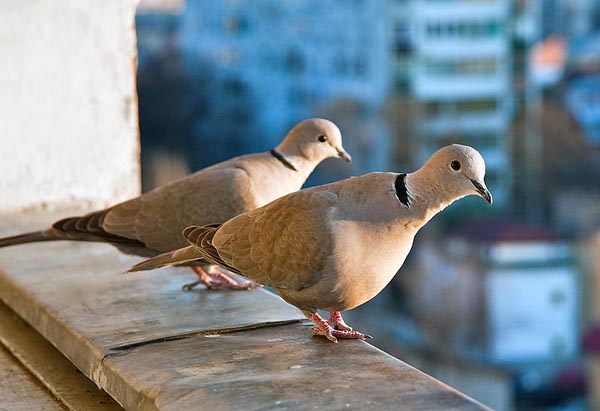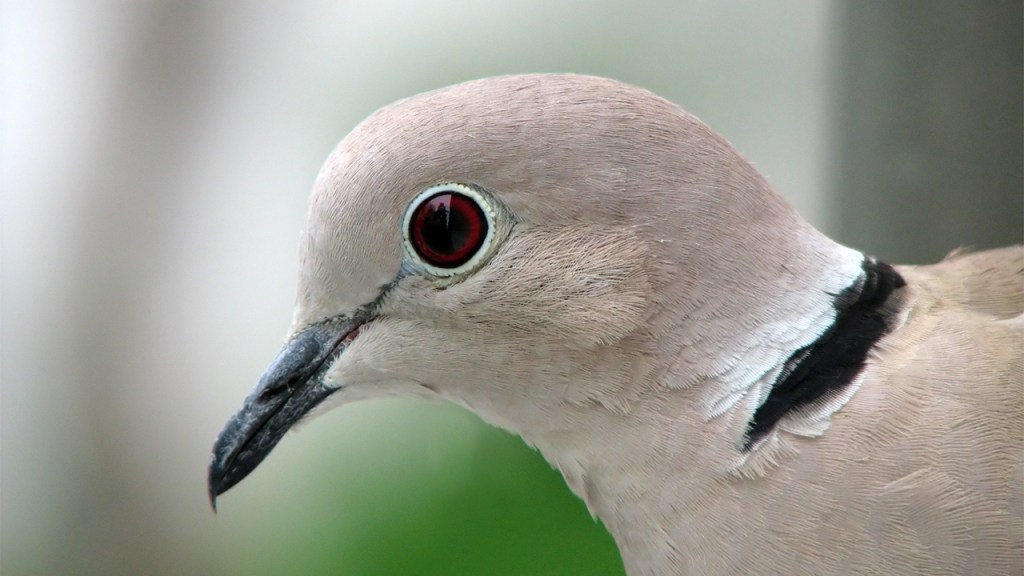The Great Backyard Bird Count (GBBC) — one of the largest citizen science initiatives in the world – annually documents a wide variety of bird population trends.
To my mind, one of the most interesting has been the dramatic spread of the non-native Eurasian collared dove across North America.
The GBBC asks citizen birders to watch an area for at least twenty minutes sometime during a four-day period in mid-February (this year’s count concluded yesterday), and record the birds they see.
Just ten years ago, seeing a Eurasian collared dove would have been a novelty. No more: the doves are now commonly reported by birders in most of the United States.
GBBC data tell the story of this rapid spread.
In the 1970s, the Eurasian collared dove was introduced to the Bahamas. By the early 1980s, the non-native birds made their way to South Florida, where they established populations. Then they began spreading north and west.
Their range appears to have expanded slowly at first. A look at GBBC reports from 1998 show a lot of sightings in Florida, with some birds reported in Texas, Alabama and Arkansas.
By 2001, the doves reached California.
Last year’s bird count results showed the Eurasian collared dove had colonized much of the country. It has not (yet) been reported in New England, but it has reached as far north as Alaska.
The GBBC’s video map dramatically illustrates this expansion.
In my state of Idaho, the doves were first recorded in 2005 by two backyard birders. In subsequent years, the bird was commonly reported in Idaho’s eastern corners. Last year, 132 GBBC participants reported 719 doves throughout the state.
I saw my first Eurasian collared dove in our backyard in 2008 – a banded bird that may have been an escaped pet. Last year, I began seeing the doves hanging around our neighborhood. This year was the first that I noted the species during my own participation in the Great Backyard Bird Count.
What’s going on here? Should conservationists be concerned about this spread?
Unlike some dove species, Eurasian collared doves aren’t migratory. However, they do readily expand into new suitable habitat. In fact, in their native Asia, Eurasian collared doves have been rapidly expanding their range as well – colonizing new countries every year.
The dove is one of those species that adapts well to humanity. The trees, power lines and bird feeders of suburbia provide perfect habitat. The Eurasian collared dove is almost always seen near homes and farms, not unbroken forest or prairie.
Research indicates it is not adversely affecting native mourning doves or other birds. It may simply be filling a new habitat niche created by suburban habitat. But it is still early in the spread.
Could Eurasian collared doves become an invasive threat? That remains to be seen.
Citizen science projects like the GBBC and another citizen initiative, Project FeederWatch, will help scientists continue to track the spread and impacts of the species. It will be interesting to learn what this year’s count found about Eurasian collared doves. If past years are any indication, their populations will likely have grown and spread into new areas of the country.
Have you seen Eurasian collared doves in your area? Have you noted other trends during your backyard bird counts? Let us know what you’re seeing!





Just saw our first one here in Lexington, Ga. Only saw the one so far.
Matt, I Guess I’m too late for the annual Feb. bird count but I have 12 Eurasion Ring Neck Doves in my back yard Daily.
Also 3 Mourning Doves.
Been Feeding them black oiled sun flower seeds.
we live on the south east corner of Napa ca. near Sky Line Park.
Cal. Game and Fish has all year round, no limit, hunting of the Ring necks…..
I have two of these birds sitting in my maple tree right now. They. Have not moved in at least two hours. They are cuddled together. Very beautiful. I have been watching through my front window.
I live in Spokane, WA & had two last year, this year three. I’m assuming the new adult may be their baby, but never saw it last winter. They arrive below the feeder at nine in the morning & three in the afternoon. I’ve heard their calls in warmer months. They’re very cautious birds and will wait until the cats are inside before going to the ground to feed. Beautiful birds.
In June of 2016 the first Eurasion Dove landed on my driveway. This is now 02/17 and there is now a pair of these doves who visit every day. The temperature last nite went down to minus 27 and I revel at the fact they are so very hardy. I live in Prince George, British Columbia. I am assuming these are Eurasion.
I am here in Eugene, Oregon and there are quite a few that can be spotted in my trees and neighboring trees, now that there are little to no leaves in the ones they can be spotted in.
there are some of these birds in thorhild alberta witch is 60 miles north of Edmonton .they have been here about 3 years.
For the past few days, a pair of these Eurasian collared doves has been hanging around our yard and our neighbor’s yard in the San Francisco Bay Area. This is the first year we’ve noticed them.
Agua Dulce CA: two Eurasian Collared doves regularly feed with other ground feeders at our feeding station. They were first sighted in December of 2016 in our yard……
Yes, I have seen Eurasian Doves in my back yard. I give them Dove birdseed and the come almost everyday.
I have two Eurasian Doves in my backyard. I live in Redding, CA
Jan. 12, 2017 Kelowna BC.
I first noticed a couple of Eurasian collared doves in our neighbourhood of the Lower Mission of Kelowna BC. probably 3 or four years ago. Up until that time we only had Mourning doves in the area, probably 4 or 5 mating pairs. The area is low density residential butting up to some open field agricultural land. The Eurasian doves have done very well here and now there are probably 10 to 12 mating pairs in my immediate neighbourhood. Their cooing in the Spring mating season can be quite annoying as it can start very early in the morning. Unfortunately, the success of these birds seems to be a the expense of the Mourning doves as I have not seen or heard from them this past year in my area. It could be that they have pushed the Mourning doves into the surrounding farm fields and wood stands.The Eurasian collared doves may be seen as being more aggressive as I’ve seen them stand up to and fend off Magpies which themselves are a very aggressive bird. So are the Eurasian collared doves having and impact on native species? Maybe and I’m in the probably camp…
…Michael Atherton
I have a pair of these beautiful doves in my back eating bird seed that fell on the ground from a feeder. Downey ca. 90241
We live near on an acreage near a little town called Onoway, Alberta, Canada and have noticed at least one Eurasian Collared Dove at our feeders for at least the past 3 weeks. The light color and black neck ring along with the tail had me guessing as to what this bird was, but the pigeon/dove look had me interested and luckily I found a perfect picture of it on the internet. We’ve never seen this bird before and have lived here for 30 years. Trying to get a picture of it but it takes of when you get within 20 feet of it.
False Creek, Vancouver, BC CANADA. Just looked out to our “Backyard” and saw a bird we have not seen before. Very beautiful! She/He was perched on a rooftop vent. We have had a unusually cold and snowy start to our Winter here and have started hummingbird and suet feeders. Will keep an eye out for our new neighbor!